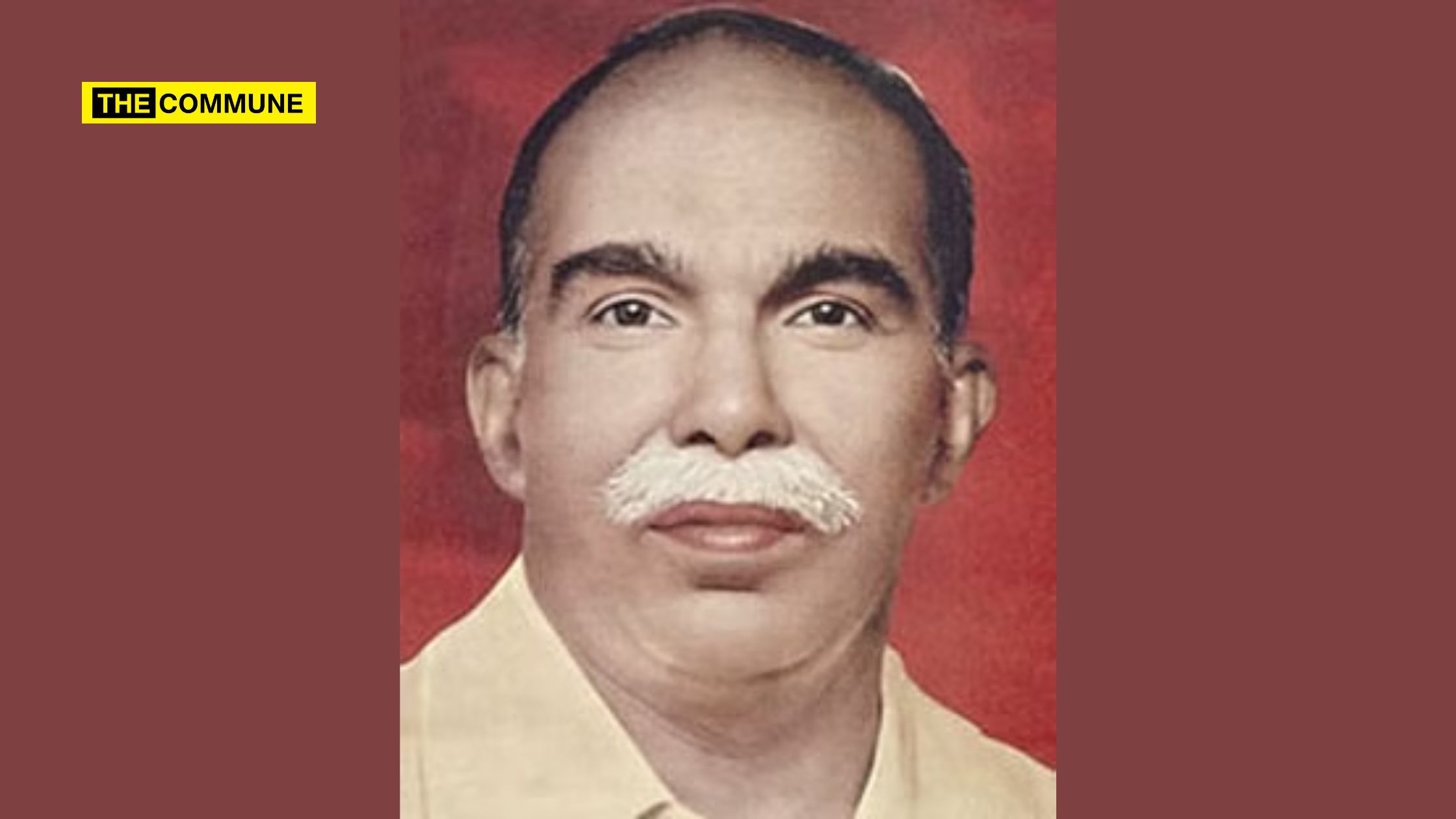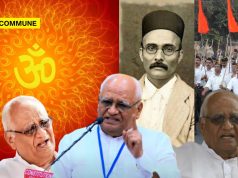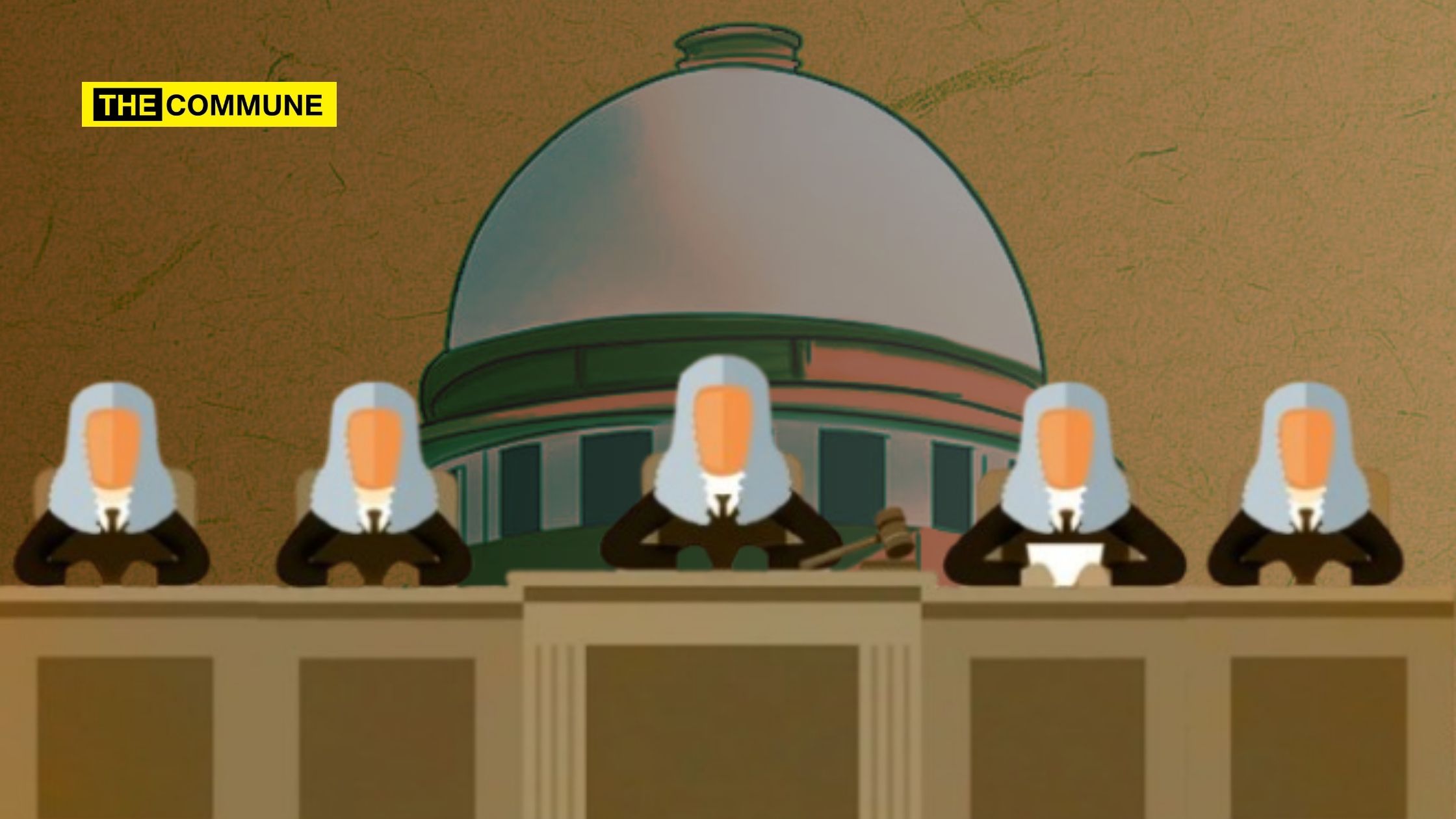
Feature Image Courtesy: Vikatan
On this day, in the year 1907, in the Boothappandi village of Kanyakumari district, Tamil Nadu, was born a man who would go on to be associated with communism and socialism, someone who followed the principles of communism, unlike self-proclaimed communists of today.
In this day and age, most Tamilians would probably remember the name Jeevanandam from the film Kaththi. But did you know that the Vyasarpadi Jiva railway station was also named after him?
Today is the birthday of P.Jeevanandham, a socialist leader with a clean record in public life and an orator.
Vijay's character in Kathi film was named after him; As is the Vyasarpadi Jeeva railway station near Chennai.
He was one of the sane voices who boldly critiqued EVR.He… pic.twitter.com/YfE79Icqj1
— Tamil Labs 2.0 (@labstamil) August 21, 2023
A Critic Of EVR
Jeevanandam was an open critic of E V Ramasamy Naicker who made it a habit to instigate people against the Tamil Brahmins. There have been videos of members of the Dravida Kazhagam (DK) who claimed that every month they would give an account of how many poonool were cut or how many Shikha (tuft) were removed.
New #D video with subtitles
Senior Dravidian leader Sirpi Rajan himself giving first hand witness of how they used to block Tamizh Brahmins and cut their sacred thread and tuft of hair. Actively encouraged by Mr.E.V.Ramaswamy (Periyar) #CriminalPassion – tell the world. pic.twitter.com/lcChl25L6r
— Reality Check India (@realitycheckind) October 20, 2021
In response to such behaviour, he said, “It is my humble opinion that cąstẹism in TN has not reduced, but only increased because of EVR’s methods. Cutting someone’s poonool (janẹu) and kudumi (Shikha/tuft) is an act of indecency; Such acts are how viȯlent cȯmmunal activities spread across society. This singling out of a particular community to unleash all hatred upon them will never bring in true societal changes. It is uncivil, uncouth, and despicable.”
Remember இது 1957 ல் "அந்தக்காலத்து" கம்யூனிஸ்ட் ப ஜீவானந்தம் அவர்கள் பேசியது. இந்த காலத்து கம்யூனிஸ்ட்ங்க @cpmkanagaraj அருணன் மற்றும் அனைவரும் அவிங்க அறிவை பாலைவன மதங்களுக்கு அடகு வெச்சி கிருத்துவ இஸ்லாமிய கைக்கூலிகளாய் போனது அவமானம்.
— Elon Rusk (@hsejarsa) March 11, 2018
He even condemned the actions of cutting janeu/poonool and the Shikha (tuft) by the followers of EVR. He questioned, will doing such things eradicate caste?
His Political Life
Following India’s independence, in the 1952 Madras Legislative Assembly elections, Jeeva ran as a candidate for the Communist Party and emerged victorious in the Washermanpet constituency, which was located in the industrial working-class hub of North Madras. During his tenure as a Member of the Legislative Assembly, Jeeva advocated for the promotion of education in the Tamil language and lent his support to the linguistic reorganisation of states.
In 1959, he served as the editor of Thamarai, the literary publication associated with the Communist Party of India in Tamil Nadu, which featured contributions from several progressive and youthful writers. He also edited the magazine Janashakthi.
How He Defended Kamba Ramayanam When It Was Tarnished By Dravidianists
Jeevanandam, known for his eloquence, literary sensibilities, and talent, made a significant and enduring impact in Tamil Nadu by establishing the Tamil Nadu Art-Literary Federation (Tamil Nadu Kalai Ilakkiya Perumandram) in 1961. This organisation paved the way for numerous progressive art and literary movements in the region.
During a period when rival interpretations posed a threat to the standing of the medieval Tamil poet Kamban’s Ramayanam in the Tamil literary heritage, Jeevanandam staunchly defended it. This was particularly relevant as ideologues of the Dravidian movement, notably EVR, regarded Kamban’s work as a challenge to Tamil literary culture, claiming that it had been influenced by “Aryan Brahmin” culture.
In the 1950s, Jeevanandam adopted a more assertive stance in safeguarding Kamban’s legacy. He wrote extensively and delivered lectures on various literary and public platforms, vigourously defending Kamban against the Dravidian movement’s attempt to discredit him based on racial and cultural grounds. EVR had asserted that Kamban was a “slave of the Aryans (AaryaKooli)”, and the “Self-Respect Movement” even initiated a campaign to burn copies of Kamba Ramayanam in 1943.
Jeevanandam’s detailed lectures on Kamban were presented at the annual meetings of the Karaikudi Kamban Literary Association in 1954 and 1955. He spoke highly of Kamban, considering him an advocate for the cultivating class, and elucidated the humanistic elements in the Tamil rendition of the Ramayanam.
Jeeva is fondly remembered among Tamil literature enthusiasts for his role in popularising the poems of Subramania Bharathi among the Tamil public. He was also referred to as the ‘living Bharathi’ (nadamadum Bharathi) by a writer and critic who was associated with the Progressive Writers Movement in Tamil Nadu.
In a notable instance, during a debate in the Madras Legislative Assembly in March 1955 concerning the nationalisation of Subramania Bharathi’s works, Jeevanandam appealed to the Assembly Speaker to question the authenticity of the “authorised version” of Bharathi’s poems that was circulating in Tamil Nadu. Jeeva pointed out that the revolutionary poems addressing socialism and criticising caste had been omitted from this “authorised version.” It was Jeevanandam who, for the first time, established the social perspectives of Bharathi’s works.
Simple Living
Jeevanandam lived a modest life, relying on public transportation and residing in a humble hut until his passing. Even when the former Chief Minister Kamaraj extended an offer of government housing, Jeeva declined, citing the millions of people who lacked adequate housing. In an era marked by corruption and mismanagement among the political class, Jeeva’s life serves as a reminder of simplicity, integrity, and a dedication to social transformation.
When he passed away in 1963 at the age of 56, several thousands of people turned up for his funeral in Madras. Tributes and condolence messages poured in tremendously due to the respect he earned from different sections of society. This can be largely attributed to his participation and voicing out for various movements in India, be it the nationalist movements under Gandhi or communist movements, or caste reformation movements.
Click here to subscribe to The Commune on Telegram and get the best stories of the day delivered to you personally.




